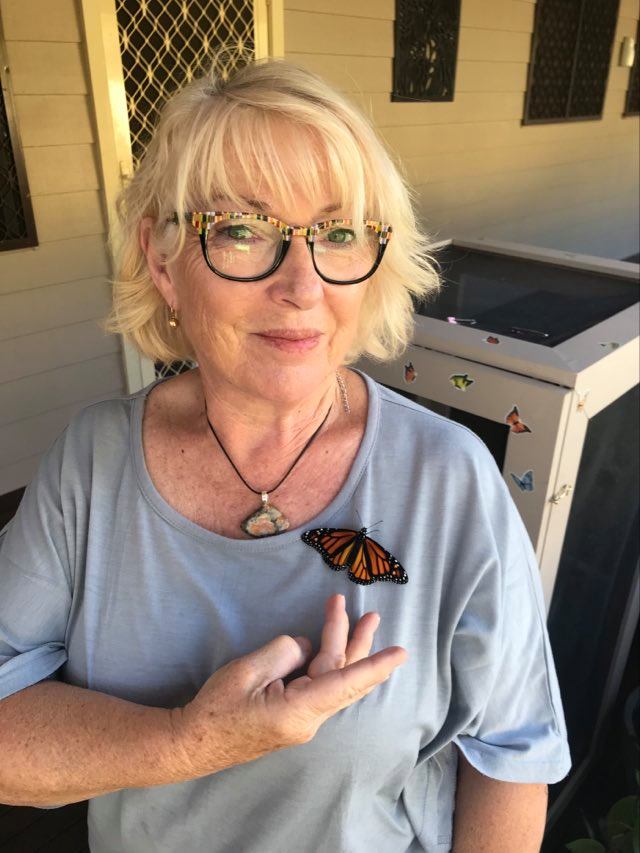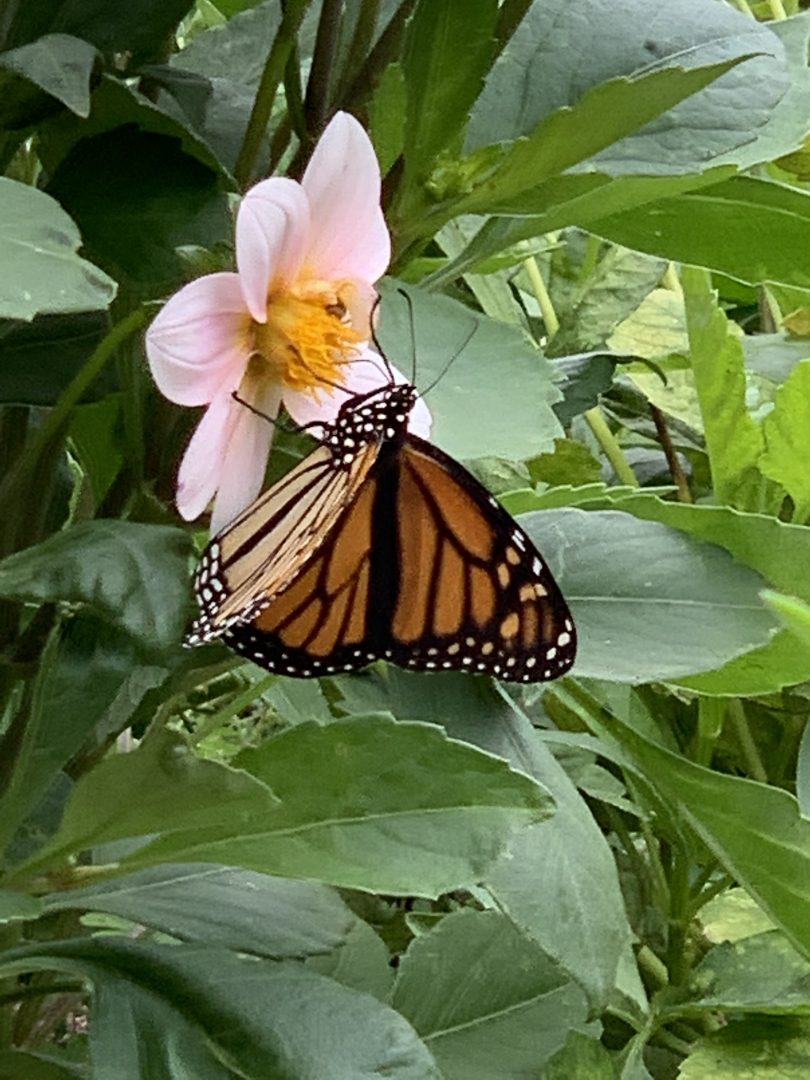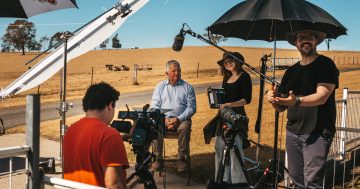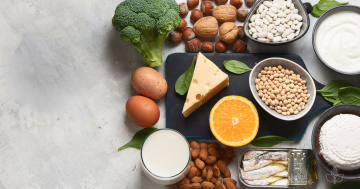
Rowena Algar-Magee with one of her recent butterfly hatchlings. Photo: Supplied.
For Rowena Algar-Magee, monarch butterflies are intrinsically linked with her childhood.
Growing up in New Zealand, a milkweed plant stood outside her home’s front door and most days Rowena could spot a caterpillar, chrysalis or butterfly enjoying its shelter, sap, leaves or nectar.
“It was all just part and parcel of our childhood,” she recalls.
But as an adult living in Australia, Rowena noticed their absence. While once a common sight along the east coast, monarchs are not native to Australia and habitat loss has seen their decline.
“When I moved to Australia I realised I hadn’t seen any monarch butterflies,” says Rowena.
“We were working as locums at a Victorian caravan park when I looked up and saw the first one. I literally screamed to my husband that it was there.”
Milkweed is the only plant that can host monarch caterpillars, allowing the butterflies to breed.
“They lay their eggs on it, the caterpillars strip the plant, and then the chrysalis hatches on it,” says Rowena.
After spotting the butterfly, she tracked down the plant and collected some seeds, thus beginning what she freely admits is a butterfly obsession.

A monarch butterfly dines out on a dahlia at Malua Bay. Photo: Kim Treasure.
For almost six months of the year, Rowena faithfully tends her butterfly flock – nursing them from almost microscopic caterpillar eggs, through the caterpillar and chrysalis stage, to the final hatching.
She ensures their wings are dry and strong before sending them out into the world, hopefully to repopulate.
The citizen scientist painstakingly collects the eggs from milkwood plants in her garden, transfers them to safe containers to hatch in, feeding and nourishing them throughout the whole process.
“I harvest the eggs, bring them in, raise them in plastic containers and feed them leaves before I move them out to safe enclosures where they hatch,” says Rowena.
“I’ve had four open their wings today.
“I had a little girl today. She dried her wings, I let her crawl onto my finger, then I went over to the deck and let her fly away. It feels magnificent because I’ve raised that little creature from an egg.
“Their success rate in the wild would be about five per cent – with me it’s 95 per cent.”
Rowena has been particularly excited to see the way nature has rebounded after the Black Summer bushfires, and she is keen to find out if her butterflies return to her Surf Beach home to breed.
“We took the enclosure inside when we evacuated and we were lucky that our house survived,” she says.
“I raised and released 279 butterflies that first year.”
At that point, they were small bright spots in an otherwise bleak landscape, but many Eurobodalla gardeners are reporting an explosion in butterfly numbers this year as bush and gardens recover.
https://www.facebook.com/704182151/videos/pcb.3912464052173458/10159349685777152
“People at Corrigans [Beach] markets noticed three and thought they might be mine,” says Rowena. “That made me think, ‘I’d like to know.'”
In the US, monarch butterflies are tagged and tracked, and they have been known to fly enormous distances, up to 16,000km.
“I have a friend in New York who sent me some tags that are very similar,” says Rowena. “I started putting ‘RM’ – for my name – and ’01’. So far ‘012’ and ‘016’ have come back and fed on my plants. I’m hoping to see if at least one comes back and lays [eggs].
“I’d also like to know if there’s a wintering site in the Eurobodalla.”
With monarch butterfly numbers down globally, Rowena hopes her efforts will play some small part in ensuring their survival.
“There is talk the next generation of children may not know what a monarch butterfly is,” she says. “Habitat loss and predators could see them become extinct.
“The reason I’m doing all this is because of my love for them, and I’m hoping other people will find that love, too.
“I’m just a normal Joe Bloggs who wants to add a bit of colour to the world.”









